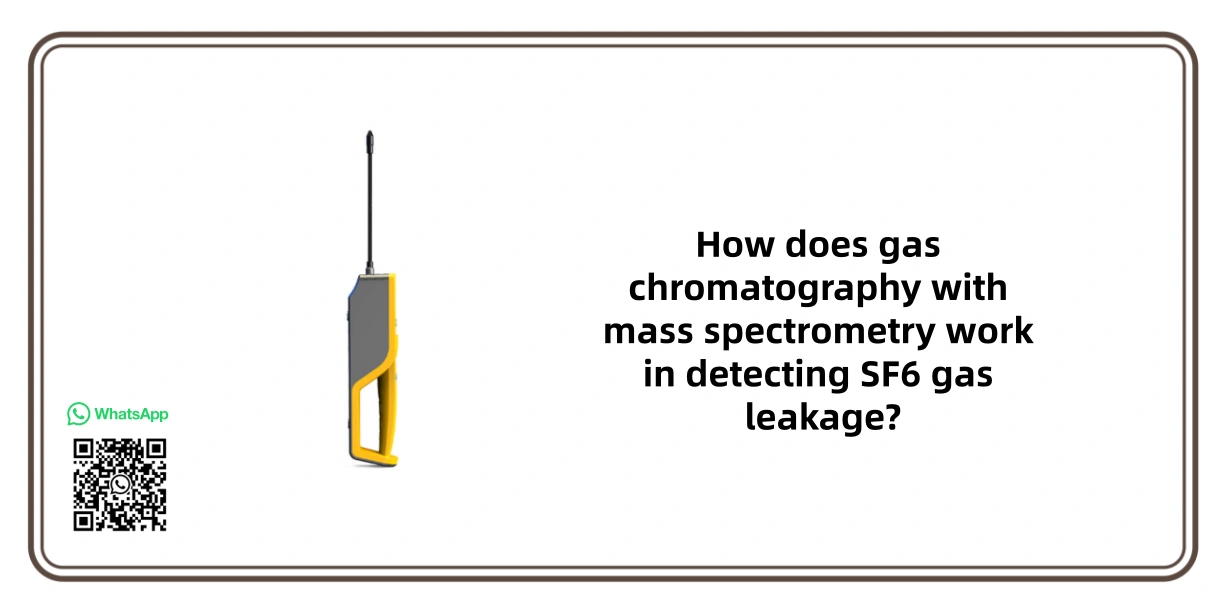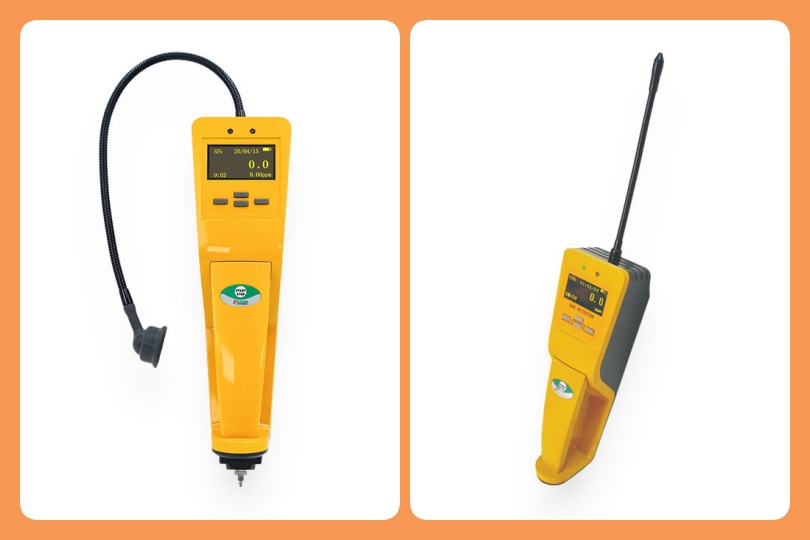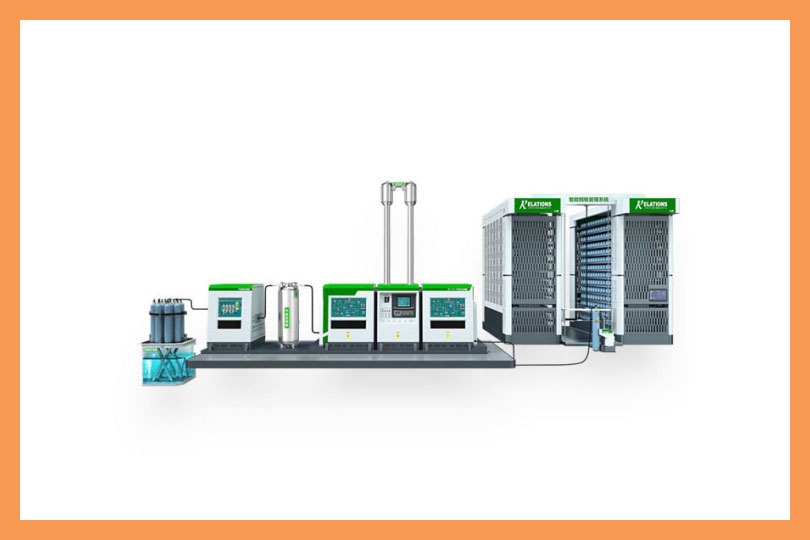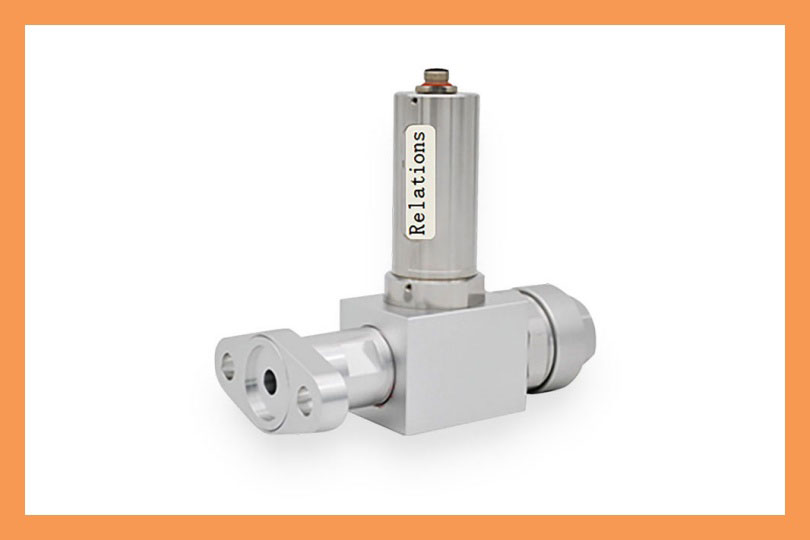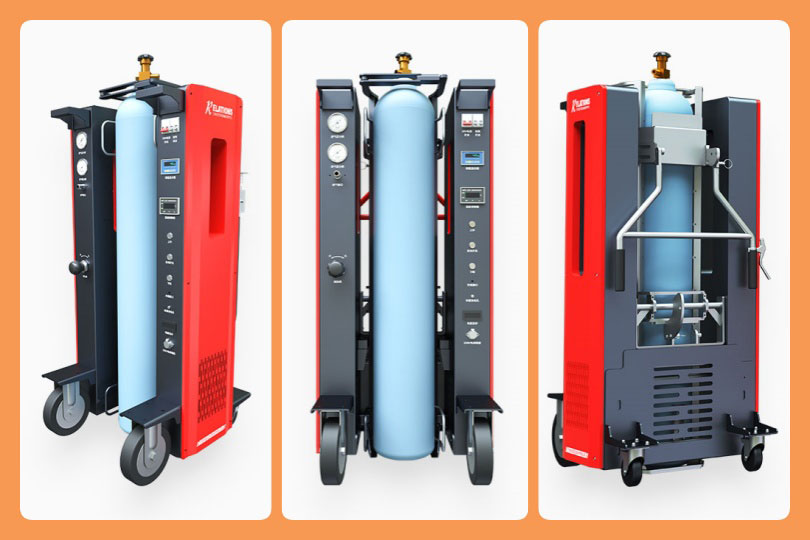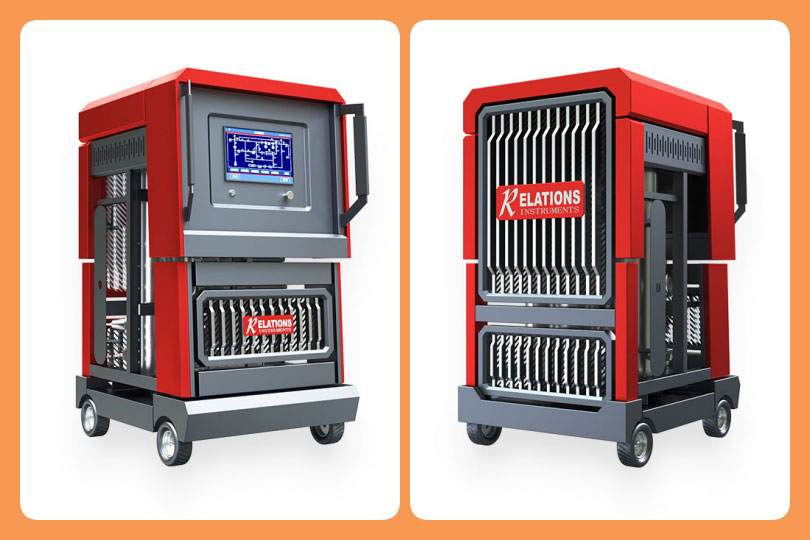Need Help: Providing Innovative and Sustainable Solutions.
Office Hours: 08:30am-6:00pm
How does gas chromatography with mass spectrometry work in detecting SF6 gas leakage?
Date
2025-10-28
[email protected]
Website
www.sf6gasdetector.com
Get Solutions And Quotes
How does gas chromatography with mass spectrometry work in detecting SF6 gas leakage?
Gas chromatography with mass spectrometry (GC-MS) detects SF6 gas leakage by combining gas chromatography’s (GC) ability to separate mixed gases and mass spectrometry’s (MS) ability to accurately identify/quantify target components, enabling ultra-sensitive and selective detection of trace SF6 in complex environments (e.g., substation air with interfering gases).
Core Working Principle: “Separation First, Detection Later”
GC-MS splits the detection process into two sequential steps: first, GC separates SF6 from other gases in the sample; then, MS analyzes the separated SF6 to confirm its presence and calculate its concentration.
Step 1: Gas Chromatography (GC) – Separate SF6 from Interfering Gases
The GC module’s role is to “isolate” SF6 from mixed gases (e.g., air, water vapor, insulating oil volatiles) so that only pure SF6 enters the MS module. Its key components and working process are as follows:
- Sample Injection: The gas sample (e.g., air extracted from a substation GIS cabinet) is injected into the GC system through an automatic sampler. For trace SF6 (ppb-level), a sample enrichment device (e.g., a cold trap filled with adsorbents like molecular sieves) is often used first to concentrate SF6, improving detection sensitivity.
- Carrier Gas Transport: An inert carrier gas (e.g., high-purity helium) pushes the sample through the chromatographic column at a stable flow rate (typically 1–5 mL/min). Helium is chosen because it does not react with SF6 or interfere with MS detection.
- Chromatographic Column Separation: The core of GC separation is the chromatographic column (usually a capillary column with a length of 10–30 meters). The inner wall of the column is coated with a stationary phase (e.g., fluorinated polymers or molecular sieves), which has different adsorption/desorption abilities for different gas molecules:
- SF6 has a stronger affinity for the stationary phase than light gases (e.g., O₂, N₂, CO₂), so it moves more slowly through the column.
- Interfering gases (e.g., N₂, O₂) have weaker affinity and exit the column first; SF6 exits later, achieving complete separation from other components.
- Column Temperature Control: A temperature programming system adjusts the column temperature (e.g., starting at 40°C, increasing to 200°C at 10°C/min) to optimize separation. Lower temperatures help retain light gases, while higher temperatures speed up the elution of SF6, avoiding peak overlap.
Step 2: Mass Spectrometry (MS) – Identify and Quantify SF6
After being separated by GC, the pure SF6 gas enters the MS module, which converts SF6 molecules into ions and detects them based on their “mass-to-charge ratio (m/z)” to confirm identity and calculate concentration. The process includes three key steps:
- Ionization (Ion Source): The SF6 gas flows into the ion source (common type: electron impact ionization, EI). High-energy electrons (70 eV) collide with SF6 molecules, breaking them into characteristic ions:
- The main characteristic ions of SF6 are SF₅⁺ (m/z = 127), SF₃⁺ (m/z = 89), and F⁺ (m/z = 19). Among them, SF₅⁺ is the most abundant (base peak) and is used as the “fingerprint ion” for SF6 identification.
- Interfering gases (e.g., CF₄, which has a similar structure to SF6) produce different characteristic ions (e.g., CF₃⁺, m/z = 69), so they can be clearly distinguished.
- Mass Analysis (Mass Analyzer): The generated ions enter the mass analyzer (e.g., quadrupole analyzer, the most commonly used in GC-MS), which uses an electric field to screen ions by their m/z ratio. Only ions with the target m/z (e.g., 127 for SF₅⁺) are allowed to pass through, while other ions (noise or interference) are filtered out.
- Detection and Quantification (Detector): The filtered target ions hit the detector (e.g., electron multiplier), which converts the ion signal into an electrical signal. The system then:
- Qualitative analysis: Confirms the presence of SF6 by matching the detected characteristic ion peaks (e.g., m/z 127, 89, 19) with the standard SF6 mass spectrum library.
- Quantitative analysis: Uses the “external standard method” – first measuring the signal intensity of standard SF6 gases with known concentrations (e.g., 10 ppb, 100 ppb) to establish a calibration curve; then comparing the signal intensity of the sample’s SF₅⁺ peak with the curve to calculate the sample’s SF6 concentration.
Key Advantages of GC-MS for SF6 Leak Detection
Compared with traditional methods (e.g., infrared sensors, electrochemical sensors), GC-MS solves two core pain points:
- Ultra-high sensitivity: After sample enrichment, it can detect SF6 concentrations as low as 1–10 ppb, which is 1–2 orders of magnitude more sensitive than ordinary optical sensors (ppm-level).
- Strong anti-interference ability: The combination of GC separation and MS characteristic ion detection completely avoids false positives caused by interfering gases (e.g., water vapor, CF₄, insulating oil volatiles) in substations.
Practical Application Notes
- Sample Pretreatment: For on-site substation detection, a portable sampling pump (with a filter to remove dust/water vapor) is used to collect air samples, and a cold trap is added for enrichment to ensure trace leaks are not missed.
- Calibration Frequency: The GC-MS system needs to be calibrated monthly with standard SF6 gas to avoid deviations in quantitative results caused by column aging or ion source pollution.
- Portable vs. Laboratory Models: Laboratory GC-MS has higher accuracy but is bulky; portable GC-MS (e.g., Thermo Scientific’s ISQ QD) is small (weighing ~20 kg) and battery-powered, suitable for on-site leak localization in substations.
Realize The Recycling Of Sf6 Gas
